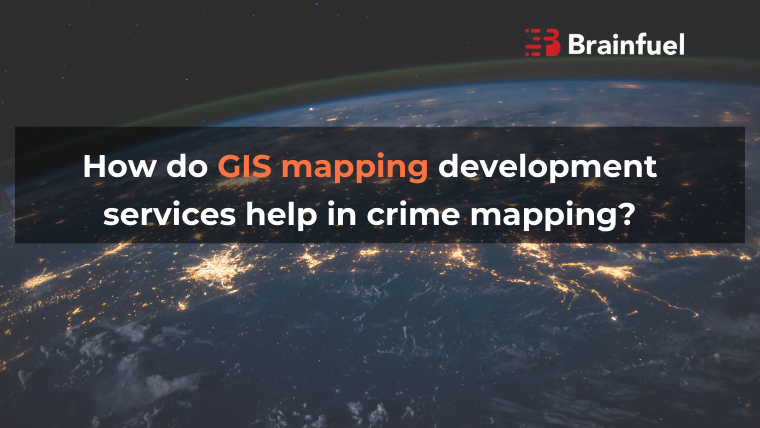How do GIS mapping development services help in crime mapping?
It is widely known that GIS mapping development services is a very useful tool, it can be combined with almost every field of study and place information on the map so that to draw conclusions effortlessly. The traditional and age-old intelligence and criminal record-keeping system has failed to meet the demands of today’s crime situation. Manual methods do not produce accurate, dependable, and comprehensive data 24/7, nor do they help in trend forecasting and decision-making. It also has a negative impact on productivity. The answer to this ever-increasing problem can be found in the use of Crime Mapping using GIS services.
The role of place in crime:
The representation of crime as a spatial function is of paramount importance and plays a key role in helping to understand and tackle crime problems. Crime has an inherent geographical quality, that is, it has to happen somewhere in place and time. Also, crime is not randomly distributed. If crime were random, there would be equal chances of it happening anywhere at any time. However, that isn’t the case and there are concentrated places of activity or ‘Crime Hotspots’. These can easily be identified by using GIS mapping development services and mapping the geographic patterns of where the crimes occur.
Types of data plotted using GIS mapping development services for crime mapping:
The data needed for the base map belong in a category named “primary sources” because these spatial and location data are received for direct use in GIS in digital format.
The 4 different types data that are plotted for crime mapping using GIS mapping development services are:
- The nature of the crime.
- The spatial location of the crime.
- The time that the crime occurred.
- The criminal that perpetrated the crime.
All of these factors are to be plotted on the map and crime analysts can use maps to see graphic representations of crime-related concerns. Understanding where and why crimes occur helps to improve the crime-fighting efforts. Law enforcement officers can better safeguard citizens by mapping crime using GIS mapping development services. Simple maps that show where crimes or crime clusters have occurred can be used to help direct patrols to the areas where they are most needed. More complicated maps may be used by policymakers in police agencies to identify trends in criminal activity, and maps may prove beneficial in solving criminal cases.
The quickest way to visualize the complete crime scene is to use digital maps generated using GIS mapping development services. The locations of crime events, arrests, and other events can be presented on maps on a regular basis. Rather than scrolling through a list of events, this makes it simple to see what’s going on in a given location.









